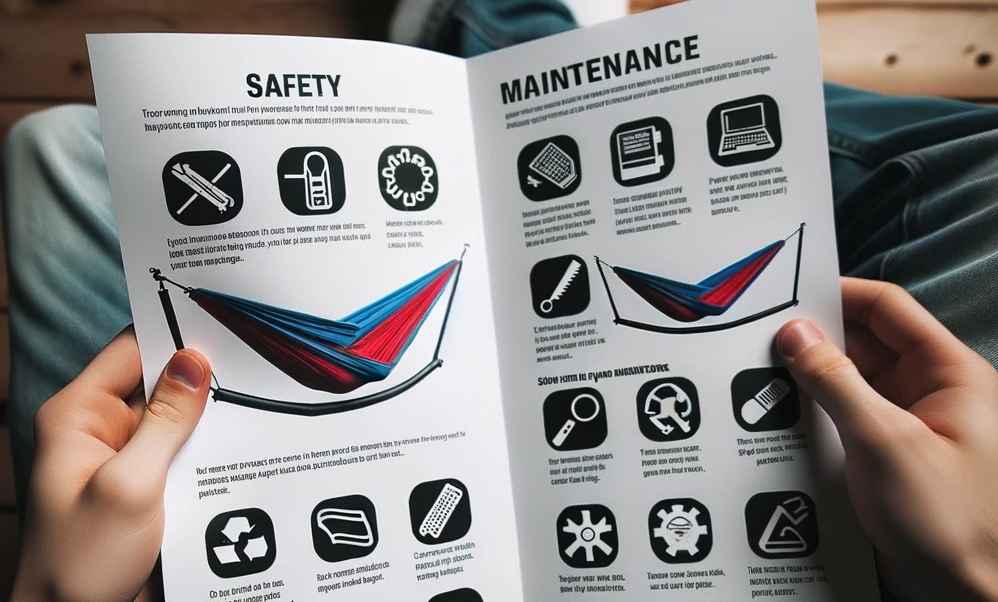Wondering how to choose a hammock that suits your needs? Look no further. From their rich history to the vast range of modern designs, hammocks offer a unique blend of relaxation and functionality. In this comprehensive guide, we’ll walk you through the different types of hammocks, essential accessories, and vital safety and maintenance tips. Dive in to find the perfect hammock for your peaceful retreat.
Table of Contents
History of Hammocks
The hammock, a symbol of relaxation and comfort, has a storied history that spans centuries and civilizations. From its origins in Central and South America to its adoption by seafaring explorers, the hammock has seen a significant evolution in design, purpose, and cultural significance.

Origins and Cultural Significance
The hammock’s origins trace back to the indigenous peoples of Central and South America. Crafted from woven tree bark or plant fibers, these early hammocks were not just leisure items but essential sleeping arrangements. They provided protection from ground-dwelling insects and increased air circulation in warm climates.
Adoption by European Explorers
When Christopher Columbus landed in the Bahamas in 1492, he was introduced to the hammock by the native Arawak Indians. Recognizing its utility, European sailors adopted hammocks as space-saving sleeping arrangements aboard ships. They also observed that sleeping above the ground reduced the risk of disease, a significant advantage in those times.
Global Spread and Modern Adaptations
As European explorers ventured into new lands, the hammock’s popularity spread worldwide. It became particularly favored in warm regions for its cooling advantages. Over time, materials such as canvas, cotton, and synthetic fibers replaced the traditional bark and plant fibers. Today, hammocks come in various designs and materials, suited for both recreational use and permanent sleeping solutions.
From its ancient origins to its modern adaptations, the hammock remains a testament to human ingenuity. Its simple yet effective design has withstood the test of time, providing comfort and utility across cultures and generations.
Types of Hammocks
Hammocks, with their rich history and diverse variations, have adorned many a backyard, beachfront, and camping site. When diving into how to choose a hammock, it’s beneficial to understand the distinct types available.
Here are five of the most sought-after hammock styles:
Rope Hammocks:
Rope hammocks, instantly recognizable by their net-like appearance, are primarily fashioned from cotton or polyester. Cotton offers softness and comfort, while polyester provides durability and resistance to weather elements. These hammocks come equipped with spreader bars that keep the hammock taut, ensuring an open lounging surface. Ideal for sunny beach fronts or pool sides, they promise ultimate relaxation, thanks to their breathable design.
Quilted Hammocks:
Quilted hammocks resonate luxury. These hammocks boast double-layered fabric with plush padding sandwiched in between, offering a cushioned retreat. Their solid weave ensures warmth, making them perfect for cooler evenings or breezy locations. Often coming in varied patterns and colors, quilted hammocks don’t just offer comfort; they’re also a statement piece for any outdoor space.
Mayan Hammocks:
A tribute to craftsmanship, Mayan hammocks have their roots in Mexico. These hand-woven wonders are renowned for their vibrant colors and intricate patterns. Made using thin yet sturdy strings, Mayan hammocks provide a delicate balance of lightness and strength. Their airy design ensures maximum breathability, making them an ideal lounging spot on a sultry day.
Brazilian Hammocks:
Evoking images of the laid-back Brazilian lifestyle, these hammocks mirror Brazil’s rich hammock-making legacy. Recognizable by their deep pockets and decorative fringes, Brazilian hammocks are woven from high-quality cotton. Their snug design offers a cocooning effect, making you feel enveloped and secure as you drift into relaxation.
Camping Hammocks:
For the nomads and adventurers, camping hammocks are a godsend. These specially designed hammocks prioritize portability and utility. Lightweight and compact, they often come equipped with features like built-in mosquito nets and weather-resistant materials. Whether you’re trekking in the mountains or camping in the woods, these hammocks ensure you’re always ready to set up a comfortable resting spot.
For those with an insatiable hammock curiosity, a wide array of styles awaits exploration. Dive deeper into the fascinating world of hammocks by checking out this blog post, packed with insights on how to choose a hammock that’s just right for you.
Factors to Consider When Choosing a Hammock
Selecting the ideal hammock isn’t merely about aesthetics or the first one you encounter in a store. Your choice should be a culmination of various factors that ensure you get the utmost value and satisfaction. Here’s a detailed look into the crucial considerations when figuring out how to choose a hammock tailored to your needs.

1. Purpose and Location
The intended use and location for your hammock play a pivotal role. If you’re a camper, you’d need a hammock tailored for rough conditions, like a camping hammock. On the other hand, if it’s for your backyard relaxation, options like rope or quilted hammocks may be more apt.
2. Material
Hammocks are crafted using a variety of materials, each offering a unique set of properties. Cotton hammocks, for instance, are soft and comfortable but might not withstand prolonged exposure to the elements. Polyester, while not as plush as cotton, offers resilience against sun and rain, making it long-lasting.
3. Size and Capacity
How to choose a hammock also entails considering its size and load-bearing capacity. Single hammocks are ideal for individual relaxation, whereas double hammocks cater to couples or those who desire extra space. Always check the weight capacity to ensure it supports the intended number of users.
4. Length and Width
While some might love hammocks that allow curling up, others might prefer ones where they can lie flat. Ensure you’re aware of the hammock’s dimensions before purchase. The right length and width enhance comfort levels exponentially.
5. Suspension System
The suspension system is paramount, especially if you’re a traveler or camper. Some hammocks come with straps, while others feature ropes. Your choice should hinge on ease of setup and the locations where you’ll be using the hammock.
6. Portability
If you’re an adventurer, you’d appreciate a hammock that’s lightweight and easy to pack. Camping hammocks, specifically, are designed for portability, ensuring they don’t add unnecessary bulk to your gear.
7. Accessories and Features
Modern hammocks can come loaded with various features. From built-in mosquito nets for campers to pockets for storing essentials, or even insulated linings for chilly nights, the add-ons can enhance your hammocking experience.
8. Aesthetics and Design
Beyond the functional aspects, the design and aesthetics hold significance too. Hammocks are available in an array of colors, patterns, and designs. Your choice could mirror your personal style or complement the environment it’s set in.
9. Budget
Finally, while it’s tempting to opt for the most luxurious hammock, it’s essential to factor in your budget. Fortunately, there’s a wide range of hammocks catering to various price points without compromising on quality.
Common Hammock Accessories and Add-ons
Hammocks, while great on their own, can be made even more comfortable and functional with the addition of some clever accessories and add-ons. Here, we delve into some of the most popular hammock accessories available today. Whether you’re a casual lounger or an avid camper, these additions can amplify your hammocking experience, ensuring you get the most out of your relaxation time.

1. Hammock Stands
Not all locations come with conveniently spaced trees or poles. Enter hammock stands. They offer the freedom to set up your hammock wherever you please, be it your patio, beach, or backyard. They come in various materials, from sturdy steel to elegant wood.
2. Rain Tarps and Weather Shields
For those who love hammocking outdoors, unpredictable weather can be a concern. Rain tarps and weather shields are designed to protect you and your hammock from the elements, ensuring you stay dry even when it’s pouring.
3. Bug and Mosquito Nets
Camping in the wild means bugs. A bug or mosquito net ensures a peaceful sleep without the nuisance of insects. These nets encase the hammock, providing a barrier against pesky critters.
4. Hammock Straps and Suspension Systems
One of the fundamentals of setting up a hammock is ensuring it’s suspended securely. Hammock straps and suspension systems are designed to facilitate this. They’re typically easy to set up and adjust, allowing for a firm and stable hang.
5. Hammock Pads and Mattresses
Enhance the comfort of your hammock with pads and mattresses. They provide added cushioning, which is especially beneficial for those using hammocks as beds during camping trips.
6. Storage and Gear Pockets
For the avid camper, storage space is crucial. Gear pockets and storage solutions tailored for hammocks allow users to keep essentials within arm’s reach, be it a flashlight, book, or snack.
7. Hammock Underquilts
Cold nights in the wilderness can be unforgiving. Hammock underquilts provide the necessary insulation, ensuring you stay warm and cozy throughout the night.
8. Hammock Top Quilts
While underquilts tackle the cold from below, top quilts ensure warmth from above. They are similar to sleeping bags but tailored specifically for hammock users.
9. Drip Strips
There’s nothing more annoying than waking up to water trickles in a hammock. Drip strips are designed to divert rainwater away from the hammock, ensuring a dry lounging experience.
10. Hammock Spreader Bars
For those who prefer a flatter lay, spreader bars keep the hammock open, providing a more bed-like feel. They’re commonly seen in rope hammocks but are available as add-ons for various other types.
Incorporating these hammock accessories and add-ons can drastically enhance your hammocking experience. From ensuring a peaceful night’s sleep away from bugs to providing optimal comfort and warmth, these additions cater to a wide range of needs. The next time you’re considering how to upgrade your hammock setup, keep these accessories in mind. They might just be the key to unlocking an even more enjoyable and comfortable hammocking experience.
Safety and Maintenance Tips to Consider when Choosing a Hammock
When it comes to enjoying your hammock, safety and proper maintenance play a pivotal role in ensuring a lasting and comfortable experience. Whether you’re lounging in your backyard or suspended between trees on a camping trip, adhering to certain guidelines can prevent accidents and prolong the life of your hammock. Here are some essential safety and maintenance tips to keep in mind.

1. Choose a Safe Location
Always ensure your hammock is set up in a safe location. Avoid areas near sharp objects, rocky terrains, or open flames. Also, be cautious about hanging your hammock too high; a lower setup can prevent serious injuries in case of a fall.
2. Check the Weight Limit
Every hammock comes with a weight limit. Exceeding this can cause the hammock to tear or its supports to give way. Always make sure you’re within the recommended weight range for safety.
3. Inspect Before Each Use
Before using your hammock, always inspect it for any signs of wear and tear. Check the fabric, stitching, suspension system, and any attached hardware. Addressing minor issues early on can prevent bigger problems down the road.
4. Use Appropriate Suspension Systems
Using the right suspension system can prevent damage to trees and ensure your hammock is safely anchored. Opt for wide straps over thin ropes, as they distribute weight more evenly and minimize damage to tree bark.
Direct exposure to sun and rain can weaken your hammock’s material over time. If possible, set it up in shaded areas or use protective covers when not in use. This not only enhances its longevity but also ensures a pleasant lounging experience.
5. Avoid Overexposure to Sun and Rain
While hammocks provide a great way to enjoy the outdoors, it’s essential to be mindful of their exposure to the elements, especially the sun and rain. Constant exposure to direct sunlight can cause the fabric or ropes of your hammock to fade and weaken over time. UV rays can degrade the strength of the materials, reducing the hammock’s lifespan.
Similarly, while some hammocks are designed to be weather-resistant, prolonged exposure to rain can lead to mold and mildew formation, especially in cotton hammocks. This not only damages the hammock but can also pose health risks.
To ensure your hammock lasts for years:
- Choose a Shaded Spot: If possible, set up your hammock in a shaded area to minimize direct sunlight exposure.
- Use a Hammock Cover: There are hammock covers available that can shield your hammock from both sun and rain. It’s a worthwhile investment if you plan to leave your hammock outdoors for extended periods.
- Quick Drying: After a rainy day, if your hammock becomes wet, ensure it is spread out and allowed to dry thoroughly before storing it. This prevents mold and mildew build-up.
- Regular Inspection: Frequently check your hammock for signs of wear and tear or any damage due to the elements.
By taking these precautions, you can extend the life of your hammock, ensuring that you have a comfortable and safe spot to relax for years to come.
6. Store it Properly
Storing your hammock correctly is pivotal to its longevity and ensuring it remains in prime condition. Even the best hammocks can succumb to damage if they’re not stored right. Proper storage not only prolongs the life of your hammock but also ensures it’s ready for immediate use without requiring extensive cleaning or maintenance.
7. Clean Regularly
Depending on your usage, clean your hammock regularly. Most hammocks can be hand-washed with mild soap and left to air dry. Always refer to the manufacturer’s care instructions for best results.
8. Avoid Sharp Objects
Be cautious of having sharp objects in or around your hammock. Items like knives, pins, or even certain jewelry can easily snag or tear the fabric.
9. Educate Children and Guests
If children or guests will be using the hammock, ensure they understand the basics of safe hammock use. Simple guidelines, like not swinging too aggressively or overcrowding the hammock, can go a long way in preventing accidents.
10. Replace When Needed
Even with the best care, hammocks have a lifespan. If you notice significant wear, fraying, or any other signs of damage that compromise safety, it’s time to consider a replacement.
Ensuring safety and proper maintenance of your hammock will not only provide peace of mind but also ensure that you can enjoy its comforts for years to come. Whether you’re a seasoned hammock enthusiast or a newbie, these tips can serve as a handy checklist for a seamless hammocking experience. Remember, a well-maintained hammock is a safe hammock.
Conclusion
“How to choose a hammock” is a question that has resonated with many over the years, reflecting our innate desire for comfort. From the hammock’s historical roots to today’s diverse designs, this simple yet ingenious creation has been a cherished relaxation tool across generations. To make the most of this delightful possession, it’s essential to understand its types, recognize the factors influencing your choice, invest in the right accessories, and follow safety and maintenance practices.
A hammock isn’t just a suspended piece of fabric; it’s a personal oasis, whether it’s tucked amidst a forest or gracing your porch. So, as you delve deeper into the world of hammocking, take a moment to savor each sway and embrace the serenity it offers. Within its gentle embrace, many have discovered moments of unparalleled joy.




